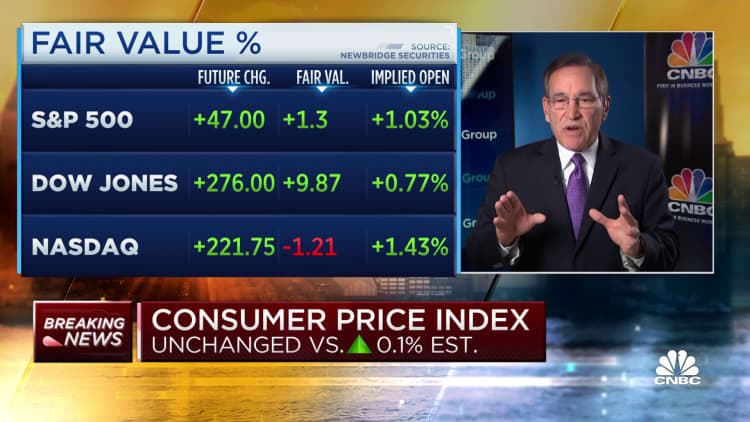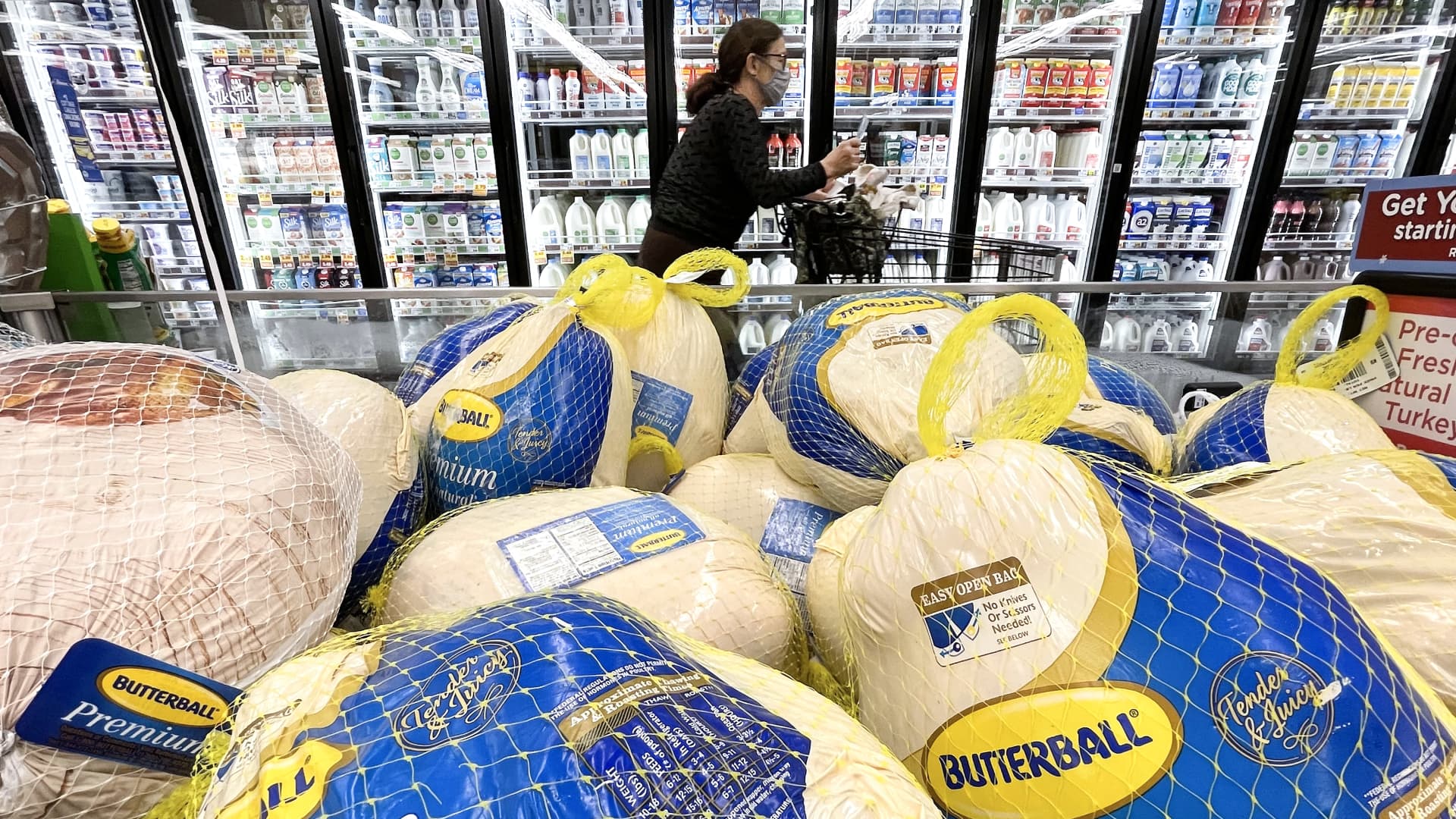A shopper walks past turkeys displayed for sale in a grocery store ahead of the Thanksgiving holiday on November 11, 2021 in Los Angeles, California.M
A shopper walks past turkeys displayed for sale in a grocery store ahead of the Thanksgiving holiday on November 11, 2021 in Los Angeles, California.
Mario Tama | Getty Images News
Food inflation has been on a tear, with prices for food at home up 2.1% year-over-year in October, according to the consumer price index.
But not everything costs more.
A Thanksgiving dinner this year will gobble up less of your wallet, thanks in large part to lower turkey prices. According to the American Farm Bureau Federation, the average cost of a dinner for 10 people will be $61.17, down 4.5% from last year’s record of $64.05.
The findings come from a survey conducted Nov. 1 to 6, with the agricultural advocacy group’s members checking prices at grocery stores in the 50 states and Puerto Rico.
Almost everything on the Thanksgiving menu is lower – prices for cranberries have dropped 18%. But the main reason for the decrease is due to the star of the show — the turkey. This year, a 16-pound turkey is averaging $27.35, down 5.6% from a year ago.
“Consumers who have not yet purchased a turkey may find additional savings in the days leading up to Thanksgiving,” the advocacy group said.
This is especially welcome news, as turkey prices shot up 50% between 2020 and 2022 – though they remain 30% higher than 2019, before the pandemic, which many consider a baseline.
Why are turkey prices dropping? There’s plenty of demand, but there’s even more supply.
Thanksgiving 2023
The average cost of a Thanksgiving dinner for 10 people, by region:
- Northeast: $64.38
- South: $59.10
- Midwest: $58.66
- West: $63.89
Source: American Farm Bureau Federation
“Last year, avian influenza devastated our industry, we lost six to seven million turkeys,” said Heidi Diestel of Diestel Turkey Ranch in Jamestown, California. Her family raises up to 300,000 turkeys a year for higher-end customers who shop in stores like Whole Foods.
As we spoke this week in one of her barns housing hundreds of large tom turkeys — often gobbling in unison — she told me that last year’s flu infected some of her family’s flock.
“We had to kill some birds, unfortunately,” she said.
So her farm, like many other turkey operations, raised a lot of extra turkeys this year to beef up supplies. They did it in case there was another round of the flu. But the avian flu this year hasn’t been too bad — at least not yet — so farmers are stuck with an abundance of birds. “We’re heavy on supply,” Diestel said.
At the same time, she’s discovered that some grocery stores have been cautious in ordering turkeys after a year of high inflation.
“Retailers have definitely been much more conscientious about what they’re purchasing — they’re purchasing a bit more lean —to ensure that they don’t have a lot of leftover,” she said. “Everyone is trying to cut their costs and operate as efficiently as possible.”

She thinks Diestel Turkey Ranch revenues will be higher this year than they were back before the pandemic, but profits will be lower. Things like feed cost a lot more now. “We have margin erosion,” Diestel said.
New Jersey turkey farmer Ronnie Lee has planned for the possibility that consumers might pull back on spending.
“This year we started our turkeys later than we’ve ever started them before, because I’m predicting that the size is just going to be a little smaller than last year,” he says. “People are starting to feel the pinch.”
Lee says one of the upsides of producing smaller birds is that they’re easier for workers to carry during processing. That helps, because he struggles to find workers, and he’s having to pay them more.
“Labor is up, no two ways about it,” he said. Employees at his farm make at least $20 an hour. Even so, he added, “finding people to do it can be difficult.”
At least for consumers, though, the news is all good. And it may get better. Turkey prices could go even lower if supplies continue to increase. Heidi Diestel says that while the latest round of avian influenza has not made much of impact, even the hint of flu could shut down export markets.
“We may have even more turkeys,” she said, before adding with a smile: “Just enjoy turkey dinner more than once a year.”
www.cnbc.com

COMMENTS